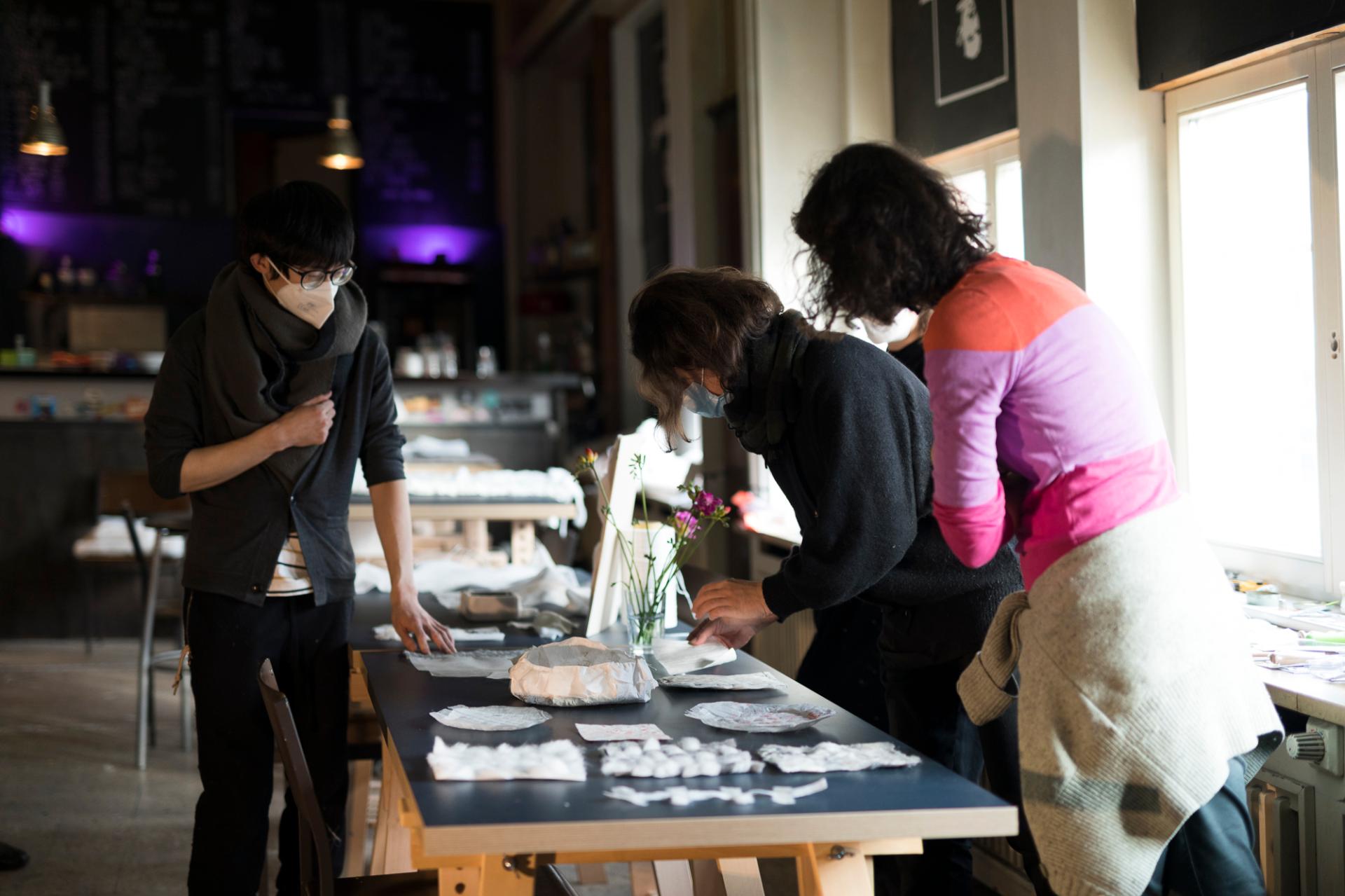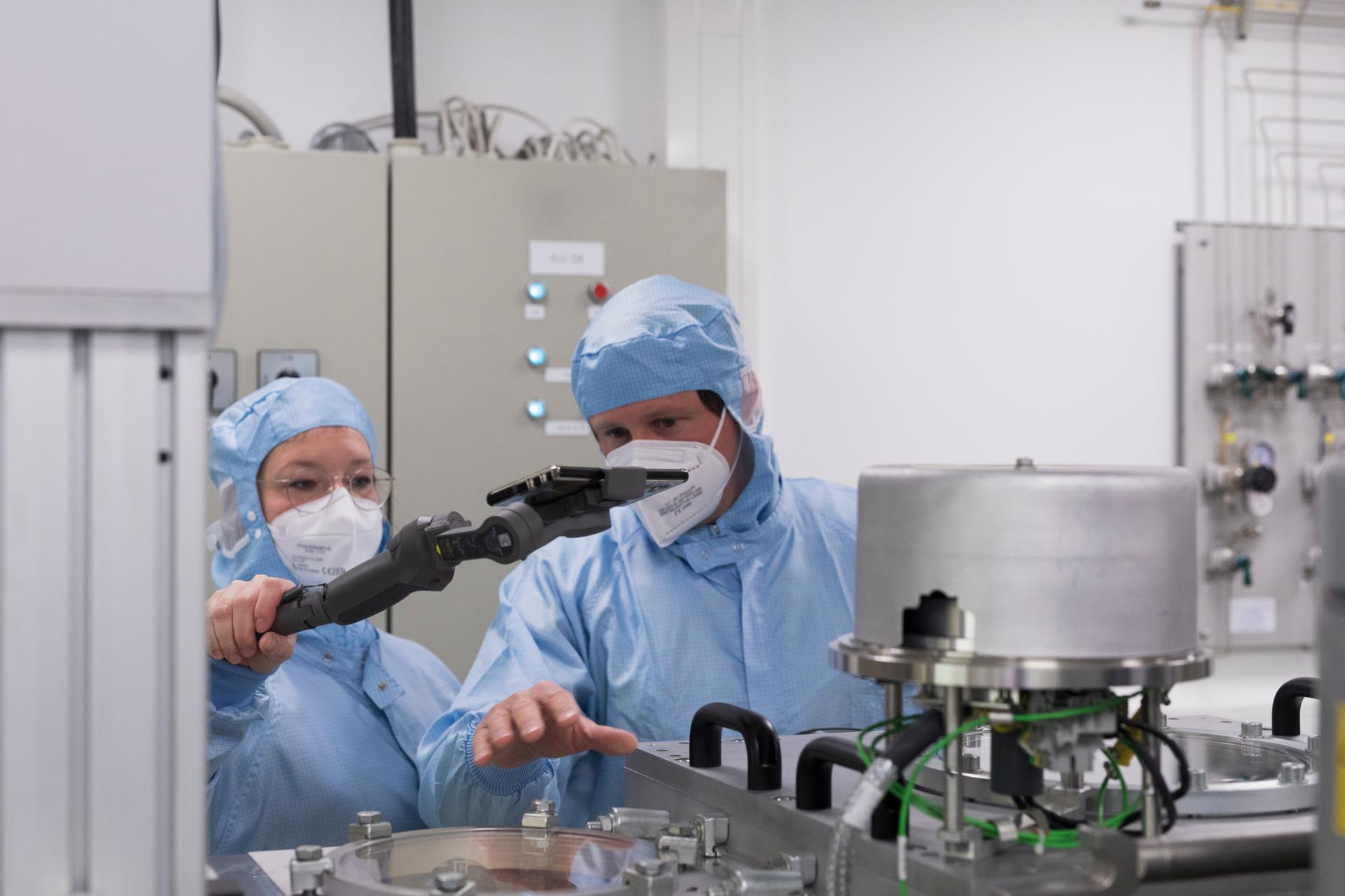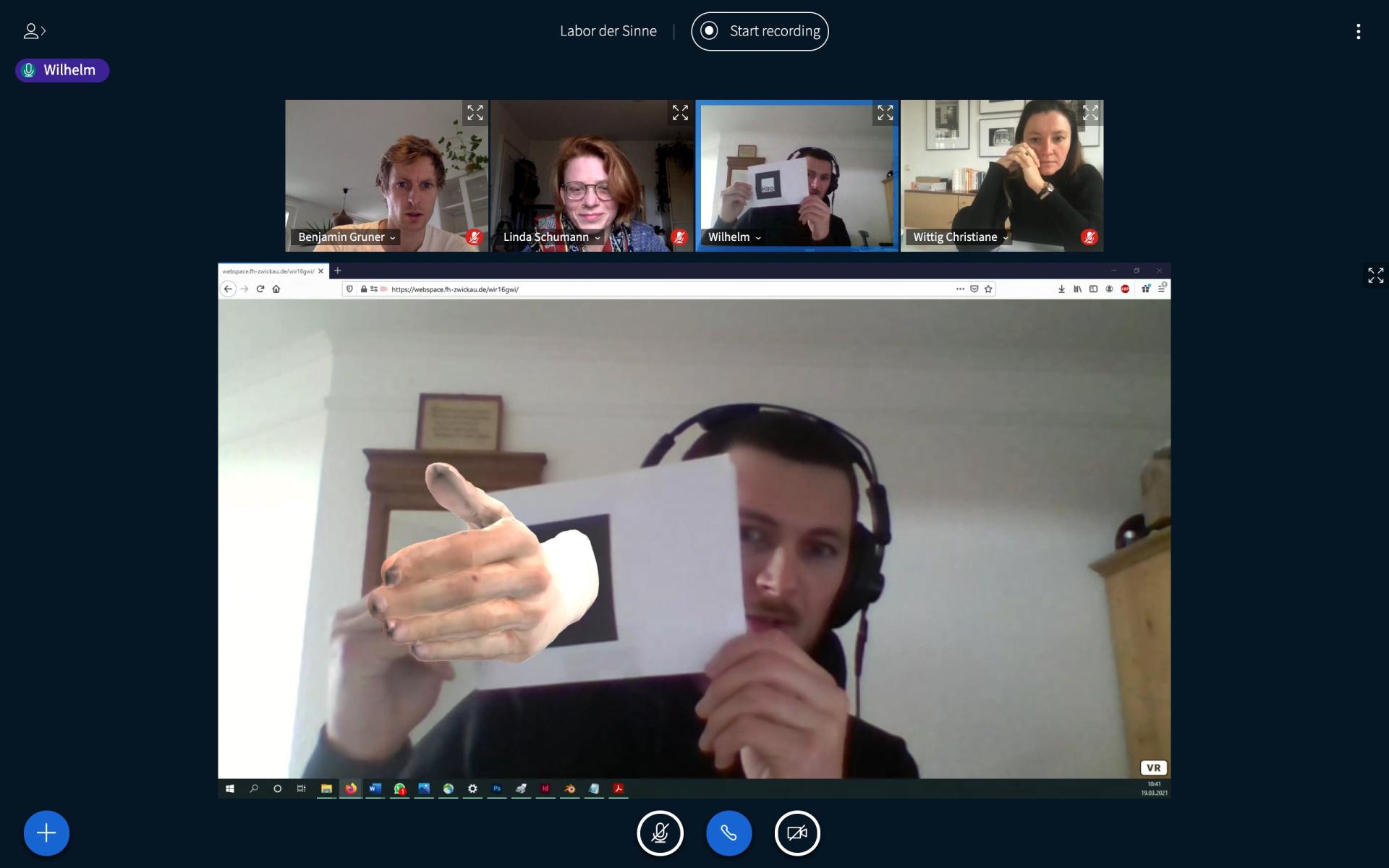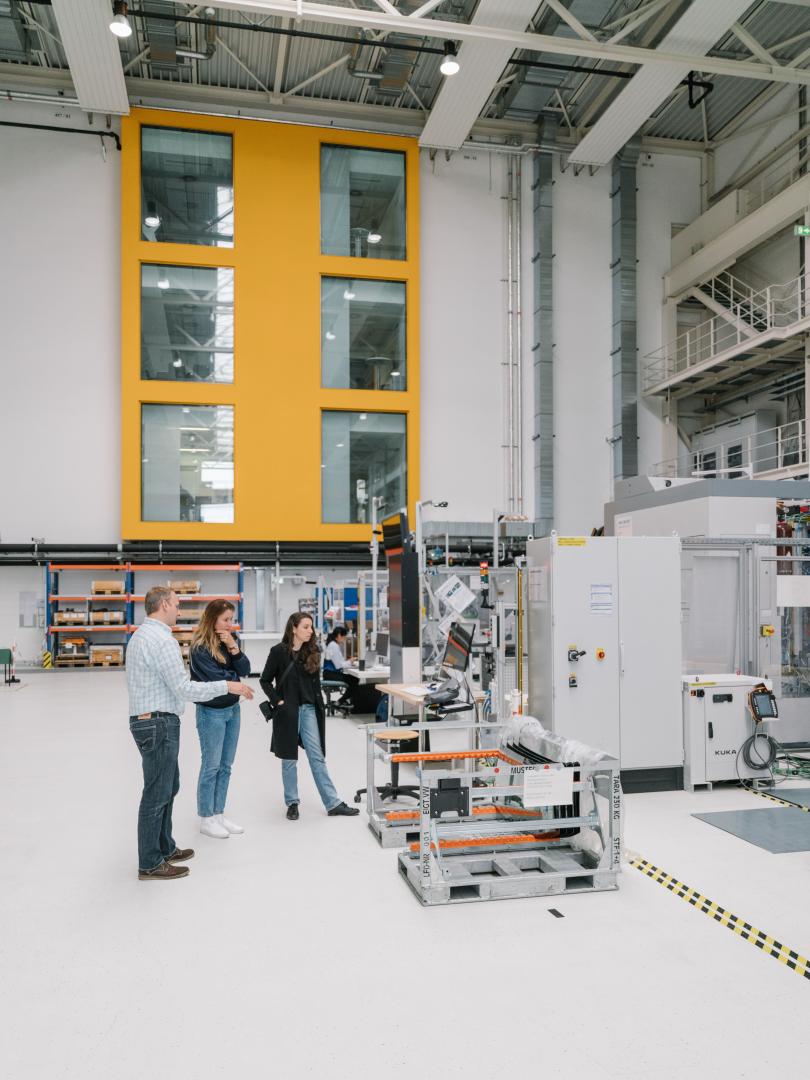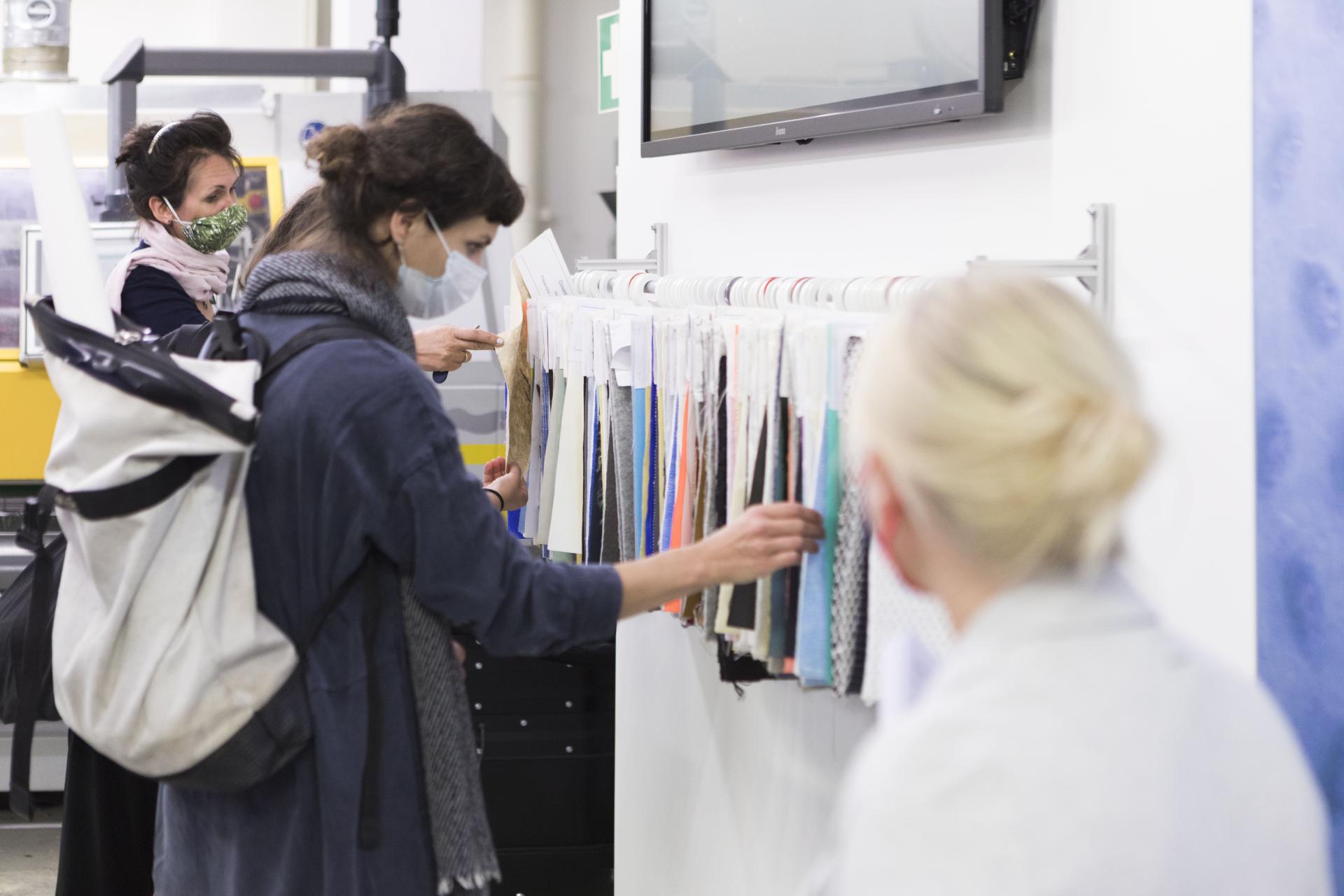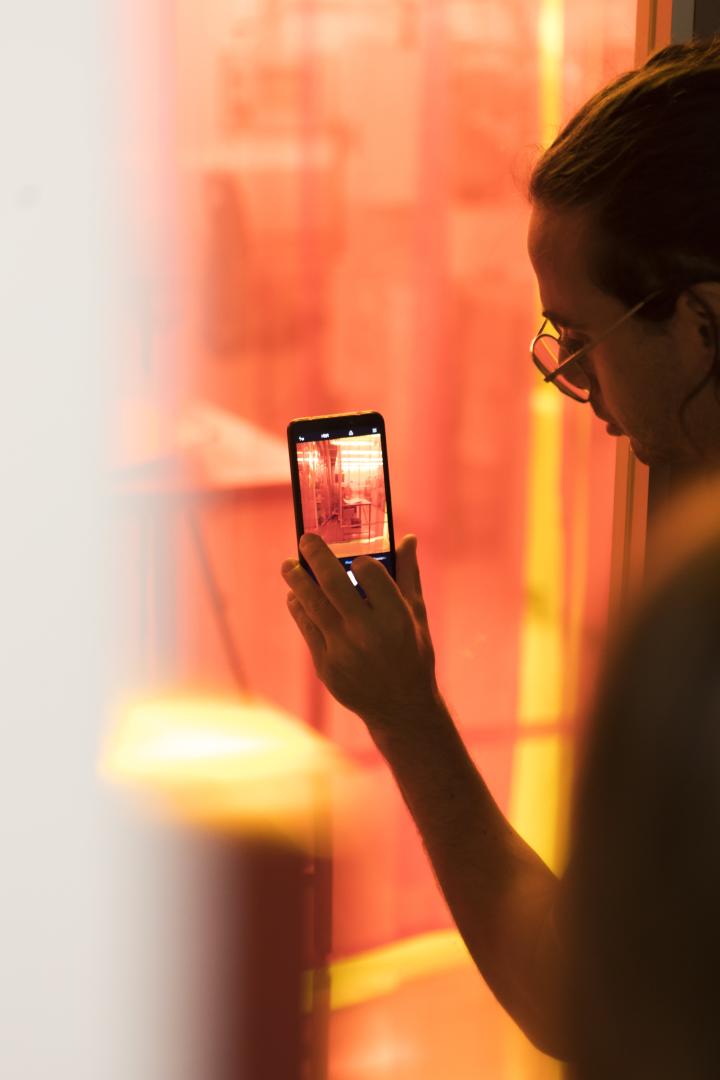Labor 2025 - Art meets Technology
Basic information
Project Title
Full project title
Category
Project Description
Lab 2025 is an easily replicable framework to bring young creatives and high-tech researchers together for eye-level discourse. It can be implemented digitally or live at any high-tech research facility.
Through artistic collaboration, Lab 2025 brings serendepity into the research process to find solutions for sustainability, by providing an aesthetic poetic view to the technological research and societal issues, involving young, future professionals in the generation of new ideas.
Project Region
EU Programme or fund
Which funds
Other Funds
Pilot Action of InduCCI - Interreg (2020/21)
Description of the project
Summary
Lab 2025 is a unique concept to bring young creatives and high-tech researchers together for eye-level discourse. It can be implemented digitally or live at any high-tech research facility.
"Art does not reproduce the visible, but art makes visible" writes Paul Klee in 1920 in his work "Schoepferische Konfession". 100 years later, this thought takes on a new dimension.
We live in a time characterized by technology and ideas of progress, which is undergoing a transformation invisible to a vast majority of society, due to digitalization and developments in the micro and nano realms. The effects can be felt by all of us, but the processes behind them are hardly perceptible. Determined by algorithms and binary codes, we are building a hidden world that is increasingly upending our way of life and our co-existence. It is therefore necessary to engage in progressive, interdisciplinary discourse to create understandable, easily accessible models for an increasingly complex reality.
At Lab 2025, artists, technological institutes and research facilities come together to experiment in the field between arts and technology as equals, researchers and innovators.
For one week in March 2021, Klub Solitaer e. V. invited 30 art school students and post-graduates to LAB 2025 in Chemnitz, to participate in one of three workshops followed by an exhibition of the results at Ars Electronic Center Linz.
The workshops were developed by artists in collaboration with the Fraunhofer Institute for Machine Tools and Forming Technology, Fraunhofer Institute for Electronic Nano Systems and the Saxon Textile Research Institute STFI. They linked the institute's technologies, machines and processes to artistic concepts and explored possible connections and their aesthetic and practical implications.
Key objectives for sustainability
In 1919, the Bauhaus reacted to the changes in the living environment caused by new technologies and, not least through painter-thinkers such as Paul Klee, envisioned and developed a new language of form with a radical-experimental approach, but also social changes, the design of urban and human living space.
This radical-experimental approach has to be adapted to the demands of our time, such as the climate crisis and the lack of sustainable resources. To achieve sustainability in technology, a holistic view of technologies and their impacts is necessary. Engineering, which only works from works on technology from a developmental perspective cannot accomplish this on its own.
Through artistic collaboration, Lab 2025 brings serendepity into the research process to find solutions for sustainability, by providing an aesthetic poetic view to the technological research and societal issues, involving young, future professionals in the generation of new ideas.
Key objectives for aesthetics and quality
As was the case with industrialization in the 19th century, the realities of life in the 21st century are being fundamentally transformed by technological developments. This happens on a social, political, cultural, yet only rarely on an artistic, creative level.
The increasingly rapid developments in the fields of nanotechnology, biotechnology, synthetic biology, augmented reality, artificial intelligence, etc. will be one of the greatest challenges for us humans in the coming decades in terms of ethics and shared values. Technology and science are not only changing our environment, but our bodies and our behaviors.
All the more important is a direct access to these complex processes and developments in order to enable a discourse and a conscious dealing with them for a broad public. Art can provide this access. For this, it is not enough to first react to the technology when it is already available for the mass market.
Young creatives therefore need access to high-tech developments, not only in the research and development departments of companies, but also beforehand in discursive spaces that are open to results. Lab 2025 has developed an easily replicable framework for this purpose, providing a professionally lead space for exchange, prototyping and presentation of high-quality artistic ideas and works in this field.
Key objectives for inclusion
Academic life is exclusive per se. Specialization can blind you to the environment.
A central element of the Bauhaus was transdisciplinarity, as well as the interaction of craftsmen and artists. Only with this combination it created the prototype of the modern world.
The transformation from an industrial to a knowledge, service and digital society, in which robots and autonomous systems take over production, supervision and creation and processes are increasingly automated, combined with the phenomenon of economic globalization, lead to uncertainties that entail fears for the future. The climate crisis will also present us with huge challenges in the coming decades. In these times of upheaval, the breeding ground for radicalization in society is large.
Hence, Lab 2025 is to enable artists to carry out long-needed mediation work, to make complex processes and technologies easily or directly accessible, so as to enable the participation of a broad public in the developments described. At the same time, the developments in the high-tech institutes are to be directly accompanied aesthetically-poetically and influence each other.
Social change does not come about through information, technology and science alone, but through the ideas that precede and accompany the change. It is precisely for this that Lab 2025 and its artists lay the groundwork, by enabling the individual to participate in this change through their open concepts.
We create a space where different ways of thinking can meet and learn from each other. By again thinking technology, science, society and art together and promoting an exchange at eye level, we open up new spaces for thought and action. Artistic creative creation becomes a common language and serves as a means of communication. We give research institutions and technology companies the opportunity to receive feedback and reflection in an artistic discourse, to generate innovation.
Results in relation to category
Lab 2025 is an easy to apply concept to train professionals based on the interdisciplinary integration of science and arts. Especially for young artists direct contact to high-tech and its development is highly limited.
We brought young creatives and high-technology researchers together in an eye-level discourse.
As curators, we invited artistic positions fitting the institute's high-tech focus to engage intensively with the available technologies on site, by getting to know the research institutes. Afterwards, these professional artists developed a research question/workshop that was advertised internationally. Interested parties (students and post-graduates) applied with a letter of motivation and samples of their work. Based on this, the artists then selected participants for their workshops, who then received insights into the institutes' tools and processes under artistic guidance. The artists, as workshop instructors, became agents and mediators between the researchers and course participants. Where in the past mostly individual artists worked together with high-tech researchers, groups of young professionals were now introduced to this field.
The approach can easily be adapted to other regions and fields.
How Citizens benefit
Labor 2025 is a new approach to science communication.
We live in a time characterized by digitalization and technological progress. This brings about transformations in several areas of public and private live, which are invisible to the vast majority of the public. The effects can be felt by all of us, but the processes behind them are hardly perceptible anymore, nano- and micro-developments hard to grasp for non-scientists. Determined by algorithms and binary codes, we are building a hidden world that is increasingly upending our way of life and our co-existence.
Hence, a direct access to these complex processes and developments becomes all the more important, to enable a discourse and a conscious handling of them for a broad public.
For the Lab 2025 in March 2021, the course results were hence presented in an exhibition at the Ars Electronic Center. Artist talks to explain the processes and ideas behind the project were internationally broadcasted online. The exhibits will furthermore be presented in the windows of a cultural center pertaining to Klub Solitaer, to enable passers by to get an insight into the project.
Innovative character
Although art colleges are increasingly setting up their own high-tech labs for students, there is almost no access for young graduates to the production and research sites of high technology. Lab 2025 creates an interface between highly innovative young creatives and high-tech developments at an early stage. The participating employees of the research institutes receive creativity training and new ways of thinking through the interaction with the artists in their working environment, resulting in a change of perspective.
Labor 2025 does not need an art school for its research and can be implemented digitally or live at any high-tech research facility. Thus it is also an on site training for professionals based on the interdisciplinary integration of science and arts.

